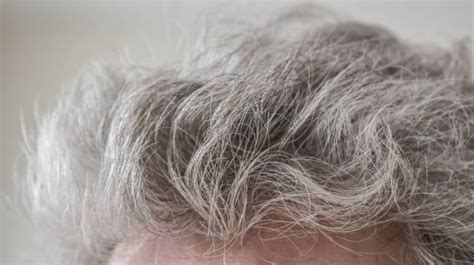For many men, the appearance of the first silver strands is an inevitable sign of aging, often sparking curiosity about when this process typically begins. While there’s no single, universal age, research and anecdotal evidence point to a general timeframe for men to start noticing their hair transitioning from its natural color to grey.
Understanding the Science Behind Grey Hair
Hair greying, or canities, is primarily caused by a decrease in melanin production. Melanin is the pigment responsible for hair color, and it’s produced by specialized cells called melanocytes located in the hair follicles. As we age, melanocytes begin to slow down and eventually stop producing melanin. When a hair follicle no longer produces pigment, the new hair growing from it will be white. Because of the way light reflects off white hair mixed with colored hair, it appears grey.

The Average Age Range for Men
While genetics play a significant role, a common guideline often cited is the ’50-50-50 rule,’ which suggests that by age 50, 50% of the population will have at least 50% grey hair. However, for men, noticeable greying often begins earlier than that.
Many men report seeing their first grey hairs in their late 20s or early 30s. By their mid-30s to early 40s, it’s quite common for men to have a noticeable scattering of grey, particularly around the temples and beard area. For some, it might start in their early 20s, while others may not see significant greying until their late 40s or 50s. Ethnicity can also play a role; Caucasians tend to grey earlier than Asians and African Americans.

Factors Influencing Early Greying
Beyond natural aging, several factors can influence when and how quickly men’s hair turns grey:
- Genetics: This is arguably the most dominant factor. If your parents or grandparents started greying early, you’re more likely to follow suit.
- Stress: While stress doesn’t directly turn hair grey overnight, chronic stress can accelerate the depletion of melanocyte stem cells, potentially leading to earlier greying.
- Nutritional Deficiencies: Deficiencies in Vitamin B12, Vitamin D, folate, or iron can sometimes contribute to premature greying.
- Smoking: Studies have linked smoking to premature greying, suggesting it can damage hair follicles and accelerate the aging process.
- Medical Conditions: Certain health conditions, such as vitiligo, pernicious anemia, or thyroid disorders, can also cause early greying.

Embracing or Managing Grey Hair
The decision to embrace grey hair or to color it is a personal one. Many men choose to let their hair go naturally grey, viewing it as a distinguished sign of maturity. Others prefer to color their hair to maintain a youthful appearance. For those who choose to manage grey hair, various products are available, from temporary rinses to permanent dyes designed specifically for men.
Regardless of when grey hair appears, it’s a natural and largely unavoidable part of the aging process. Understanding the factors at play can help men anticipate and navigate this change with confidence.





